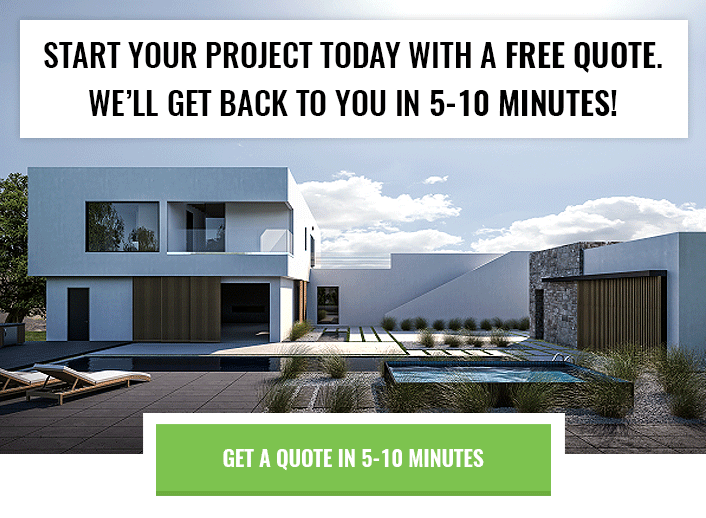Last updated: 17th July 2023
This is an update to an earlier article where we focused more broadly on commercial to residential conversions. Recently the interest has focused on office to residential conversions particularly, and as legislation changes and more incentives are provided to office building owners, this could be one of the biggest new trends in residential real estate. We look forward to helping your firm be on the cutting edge!
The last few years have brought a confluence of factors pushing developers to strongly consider converting office buildings and other commercial premises into apartment buildings and affordable housing.
Residential conversion of office buildings into housing units kills multiple birds with one stone:
Since the pandemic created a shift to hybrid work, many people don't want to go back to the office so office vacancies are high and interest from office building owners in office to residential conversions has skyrocketed
It's no secret that we're in the midst of an ever growing housing crisie and housing shortage. There's just not enough affordable apartment building interior space and other residential building options to go around. Older buildings like office towers are perfect candidates for office conversions and could help cure or even single handedly solve town's and city's housing woes across North America.
Many office buildings outdated interiors are overshadowed by newer office buildings, and while many buildings would need operable windows, air conditioning updates, more natural light etc. they could be ideal candidates for new owners who would develop these offices or commercial properties into a potential conversion
People who love the city life could get to live in the financial district, downtown core or other highly sought after areas like the middle of New York where previously it might have been physically impossible due to lack of space
While there are some regulatory and logistical barriers to doing these conversions, city leaders, office owners, developers, are working on planning barriers and even discussing economic incentives to help smooth the transition. Such changes have also become a matter of contention for upcoming elections. For example, mayoral candidates have proposed new zoning rules and easing of regulations to turn a few conversions into the potential for many.
While this is not going to be a sweeping fix for the housing crises we will probably need more than one fix and this is a great place to start. This kind of niche work is what we're great at, and we're looking for to helping you get ahead of the curve!
Have an old building that could be re-zoned for residential use or as residential buildings and want to use your building to help fix some of the issues with the housing supply? Check out examples of how old offices in commercial areas could be turned into more housing or apartments - no filing cabinets and no fluorescent light bulb to be seen anywhere! Click the images to open a larger version in a lightbox.
Declining interest in commercial rental properties and the effect of current events on commercial tenants
For a long time, owning and leasing office blocks has been much more lucrative than owning residential properties as an investment, but in the last few years things have been starting to change.
With the rise of online shopping and the retailpocalypse it brought, thousands of shops have been forced to close due to low foot traffic.
The commercial rental landscape is beginning to look increasingly bleak for property owners. Rather than giving into despair, many of our enterprising clients are looking at re-purposing their properties into residential dwellings (known as adaptive re-use).
We’re creating amazing 3D renderings of their new developments to help with finalizing the design and making sales, even before the properties have begun to be built!
As technology has improved, remote work has become more common, there has been less and less interest in offices, particularly older office buildings away from public transport and inner city locations.
By some measurements (and depending on the area being considered) commercial vacancies have been as high as 15% and 40%. And that was before the COVID-19 pandemic came along and threw almost all of our commonly held assumptions about how life would look into the future on their head!
As businesses have been forced to close for public health and safety reasons and many are struggling to make ends meet due to loss of income, commercial landlords have been left in a precarious position, with the possibility that they may be left without months of rent, and without the ability to find solvent and reliable tenants into the future.
No-one can say for sure what the future will bring, but with more and more people forced to work from home and both business owners and employees realizing the potential cost and well-being benefits of remote work, it seems a fair assumption to make that office and other commercial and industrial spaces are going to be much less profitable going forwards.
And as many businesses look likely to be forced into insolvency, there could potentially be trillions of unused square feet of commercial premises on the rental market, pushing rental prices down and forcing owners to consider alternate ways of monetizing their properties.
One possible option is to develop their commercial properties into residential units or apartments to sell or lease, known in the real estate industry as adaptive re-use.
Adaptive re-use of commercial and industrial premises. A silver lining of the last few years?
Warehouses and other industrial properties can be subdivided and converted into a large number of cozy living spaces that can be sold or leased.
Warehouses and other industrial properties can be subdivided and converted into a large number of cozy studios or apartments that can be sold or leased.
In ten years we may look back at this time and realize that 2020 was the beginning of a revolution in residential accommodation, brought on by falling demand in commercial real estate.
There are multiple factors combining to bring this together:
1. The short term accommodation industry is also in crisis
One of the strongest players in the short term accommodation industry in recent years has been Airbnb. COVID has created a perfect storm for Airbnb property owners however, where many owners had mortgaged multiple properties, completely on the back of Airbnb income.
With the short stay and travel restrictions imposed by the coronavirus lockdowns, many Airbnb property owners may have to default on their mortgages, leaving a huge gap in the short term accommodation marketplace that could be filled by commercial property owners re-developing their properties.
2. More and more office workers are going to be working from home, and it’s likely to stay that way
This means that locations which have slowly been dying due to lack of public transport or because they were “too far from the city” could be revived.
Many houses are not set up particularly well for working from home. There could also be a need going forwards for houses with specific home office spaces where the kids, spouse or family pet could be shut out so they don’t interrupt the work day.
3. Workforce or student accommodation
With many people used to the (very) short commute of working from home and the benefits of all the extra time that brings, there may be more call in the future for workforce accommodation in working precincts, so people can still retain as short of a commute as possible.
Colleges and universities are also typically found in inner city locations, and creating extra student accommodation in existing buildings could be a much more affordable option for developers than having to build new skyscrapers to fit them all in.
4. There is a huge market for affordable housing
It’s well-known that in many places, particularly cities with more expensive costs of living, that there is a housing crisis, with a huge shortage of good quality, affordable housing.
This could be a prime opportunity to rejuvenate old or lower quality commercial and industrial buildings that are no longer attracting much commercial interest, giving them new life, and giving lots of people the security of a comfortable, affordable, roof over their head at the same time.
5. Mixed use spaces
As more people choose to work from home, there may be the opportunity to create unique mixed use spaces. Think, for example, of co-living spaces that also include a co-working space in the building. Or spaces that include residential dwellings as well as commercial premises for grocery stores to meet the needs of residents.
What types of commercial buildings could be turned into residential spaces?
While some commercial properties are more suited than others for redevelopment into residential quarters, almost any commercial property could likely be turned into residential, given the appropriate zoning and the right amount of ingenuity!
Common examples are things like warehouses being turned into lofts and old motels being turned into affordable micro-housing. Mills, meat processing plants, post offices, shops and office blocks have all been turned into contemporary living spaces.
How 3D renderings can help with the re-development, sales and rental process:
3D architectural visualizations from a professional 3d rendering company can help with adaptive re-use projects in much the same ways they help regular building and development projects:
They can help you sell pre-built developments off the plan, to help raise capital for the proiect
They can help highlight design flaws, or to try variations in layout, furnishings saving you time and money in the build process etc.
Virtual reality tours can be used to help people get a more “in person” feel for what living in the property would be like
Below is an example of how we can turn your development plans into a virtual reality tour. During lock downs when people have been unable to go to open for inspections, they’ve started to become accustomed to virtual reality tours like this. We’ve been making a lot of them for clients, and it’s definitely a trend we believe will stay into the future.
There appears to be a significant window of opportunity here for owners who are positioned to turn their commercial properties into residential ones. As a 3d exterior rendering company who also specializes in residential renderings and 3d floor plan rendering services we can help you with all your visualization needs.
If you need 3D renderings or a virtual reality tour for an upcoming commercial-to-residential re-development project we’d love to help! We’re already working with lots of other property owners in the same situation as you.
Give us a call on 1-877-350-3490, get in touch using our contact form, or request a quote using the button below, and we’ll get back to you almost instantly.
Did you know that we also render Dubai, Qatar, UAE, Chinese and other international buildings? Our services are not limited just to office to retail conversion renderings in North America (although our primary market is there).

Alex Smith
Manager & Co-Owner Render 3D Quick
Alex Smith is a manager and co-owner at Render3DQuick, with over 6 years’ experience project managing their large team of 3D rendering professionals. Alex is obsessed with architecture and is a CAD design specialist in his own right and an expert in the field of architectural visualization, 3D rendering, and virtual reality tours.
As the first point of contact when you get in touch with Render3DQuick, Alex loves sharing his knowledge and answering any questions you may have about architectural visualization or the latest technologies and techniques they utilize.
Connect with Alex on LinkedIn here.













